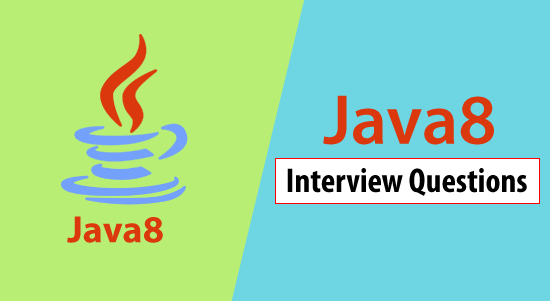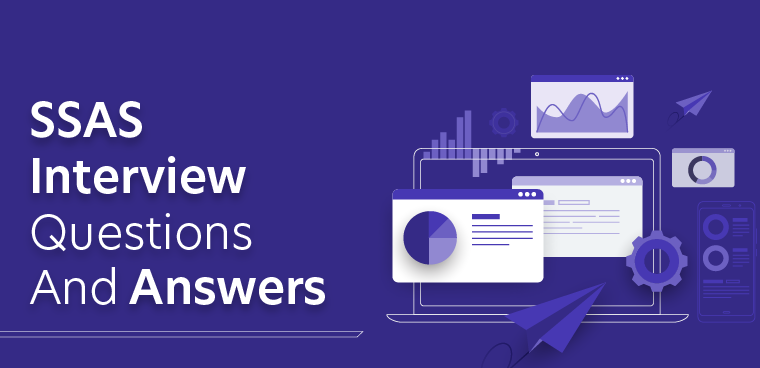Power BI DAX interview questions for experienced professionals-Power BI is a powerful business intelligence tool used by organizations worldwide to analyze and visualize data. The Data Analysis Expressions (DAX) language is a fundamental component of Power BI, enabling users to create complex calculations and measures for data analysis. In this comprehensive guide, we’ll explore the top 30 Power BI DAX interview questions commonly asked during interviews for experienced professionals, along with detailed answers to help you prepare effectively.
1. What is DAX?
Answer: Data Analysis Expressions (DAX) is a formula language used in Power BI, Excel Power Pivot, and Analysis Services Tabular models. It enables users to create custom calculations, manipulate data, and perform complex analysis within these tools.
2. What are the different types of DAX functions?
Answer: DAX functions can be classified into several categories, including:
- Aggregation functions (SUM, AVERAGE, COUNT, etc.)
- Mathematical functions (ROUND, SQRT, INT, etc.)
- Date and time functions (DATE, YEAR, MONTH, DAY, etc.)
- Logical functions (IF, AND, OR, etc.)
- Text functions (CONCATENATE, LEFT, RIGHT, etc.)
- Statistical functions (MAX, MIN, MEDIAN, etc.)
3. What is a calculated column in Power BI?
Answer: A calculated column is a column in a Power BI table that derives its values based on a DAX formula. It allows users to create new columns in a dataset by performing calculations on existing columns.
4. How do you create a measure in Power BI?
Answer: To create a measure in Power BI, follow these steps:
- Navigate to the “Modeling” tab in Power BI Desktop.
- Click on the “New Measure” button.
- Enter a name for the measure and write the DAX expression to calculate its value.
- Press Enter to save the measure.
5. What is the difference between a calculated column and a measure?
Answer:
- A calculated column is a static column calculated row by row at the time of data refresh.
- A measure, on the other hand, is a dynamic calculation performed on aggregated data in real-time during visualization. Measures are not stored in the data model and are only calculated when needed.
6. How do you handle errors in DAX?
Answer: You can handle errors in DAX using functions like IFERROR, ISERROR, and IF. These functions allow you to detect errors in calculations and provide alternate results or error messages.
7. What is context transition in DAX?
Answer: Context transition in DAX refers to the automatic conversion of row context to filter context and vice versa when evaluating expressions. This transition occurs when DAX calculations move from row-level operations to aggregate operations, or when they move from calculated columns to measures.
8. What is the difference between CALCULATE and CALCULATETABLE functions?
Answer:
- CALCULATE function modifies the filter context for a calculation expression, while retaining existing row context.
- CALCULATETABLE function modifies both filter context and row context, and returns a table of values instead of a scalar value.
9. How do you optimize DAX calculations for better performance?
Answer:
- Avoid using nested functions and complex calculations whenever possible.
- Use calculated columns instead of measures for static calculations.
- Filter data at the source using query folding to reduce the amount of data loaded into memory.
- Use relationships and model optimization techniques to simplify DAX calculations.
10. Explain the difference between ALL and ALLSELECTED functions in DAX.
Answer:
- ALL function removes all filters from a table or column, returning the entire table or column.
- ALLSELECTED function removes all filters from a table or column except those applied directly by slicers or filters in the visual, preserving user selections.
11. What is row context and filter context in DAX?
Answer:
- Row context refers to the context in which a DAX expression is evaluated for each row in a table.
- Filter context refers to the context in which a DAX expression is evaluated based on filters applied to the data.
12. How do you create a date table in Power BI?
Answer:
- You can create a date table in Power BI using DAX functions like CALENDAR or CALENDARAUTO. These functions generate a table of dates based on specified start and end dates or the range of dates in your dataset.
13. What is the difference between RELATED and RELATEDTABLE functions in DAX?
Answer:
- RELATED function returns a single related value from another table based on a specified relationship.
- RELATEDTABLE function returns a table of related values from another table based on a specified relationship.
14. How do you handle circular dependencies in DAX?
Answer:
- Circular dependencies occur when a DAX expression refers to itself directly or indirectly.
- To handle circular dependencies, you can refactor your DAX calculations, break them into smaller calculations, or use iterative functions like ITERATE or SUMX.
15. Explain the difference between EARLIER and EARLIEST functions in DAX.
Answer:
- EARLIER function refers to the value of a column in the current row context during iteration.
- EARLIEST function returns the earliest date in a column, considering the current filter context.
16. What are row-level security and role-level security in Power BI?
Answer:
- Row-level security restricts access to specific rows of data based on user permissions or roles.
- Role-level security restricts access to entire tables or datasets based on user permissions or roles.
17. How do you handle time intelligence calculations in DAX?
Answer:
- Time intelligence calculations in DAX involve analyzing data over different time periods, such as year-to-date, month-to-date, or rolling averages.
- You can use DAX functions like TOTALYTD, TOTALMTD, and ROLLINGAVERAGE to perform time intelligence calculations in Power BI.
18. Explain the difference between VALUES and DISTINCT functions in DAX.
Answer:
- VALUES function returns a single-column table of unique values from a column, considering the current filter context.
- DISTINCT function returns a table of unique values from one or more columns, ignoring the filter context.
19. How do you create a calculated table in Power BI?
Answer:
- To create a calculated table in Power BI, you can use the ADDCOLUMNS or SUMMARIZE function to generate a new table based on calculations or aggregations from existing tables.
20. What is the syntax for referencing columns in DAX?
Answer:
- You can reference columns in DAX using the table name followed by the column name, separated by a period (e.g., TableName[ColumnName]).
21. How do you handle data modeling in Power BI?
Answer:
- Data modeling in Power BI involves defining relationships between tables, creating calculated columns and measures, and optimizing the data model for performance and usability. This includes identifying primary and foreign keys, establishing one-to-many or many-to-many relationships, and organizing data into appropriate hierarchies.
22. Explain the difference between a calculated column and a calculated measure in Power BI.
Answer:
- A calculated column is a static column in a Power BI table that derives its values based on a DAX formula. It is computed during data refresh and stored in the dataset.
- A calculated measure, on the other hand, is a dynamic calculation performed on aggregated data in real-time during visualization. It is not stored in the dataset and is recalculated each time it’s used in a visual or report.
23. How do you create a hierarchy in Power BI?
Answer:
- To create a hierarchy in Power BI, you can drag and drop columns from your dataset into the hierarchy area of a table or matrix visual. Power BI will automatically create a hierarchy based on the order of the columns.
24. What are some common DAX functions used for time intelligence calculations?
Answer:
- Some common DAX functions used for time intelligence calculations include TOTALYTD, TOTALMTD, SAMEPERIODLASTYEAR, DATESYTD, DATEADD, and CALENDAR.
25. How do you handle error handling in DAX?
Answer:
- Error handling in DAX can be done using functions like IFERROR, ISERROR, and ERROR. These functions allow you to detect errors in calculations and provide alternate results or error messages.
26. What is row context and filter context in DAX?
Answer:
- Row context refers to the context in which a DAX expression is evaluated for each row in a table. It’s determined by the current row in a table and any filters applied to that row.
- Filter context, on the other hand, refers to the context in which a DAX expression is evaluated based on filters applied to the data. It’s determined by slicers, filters, and other visuals in a report.
27. How do you create a calculated table in Power BI?
Answer:
- To create a calculated table in Power BI, you can use the DATATABLE or SELECTCOLUMNS function in the DAX formula editor. These functions allow you to define the structure and calculate the values for the new table based on existing tables or columns.
28. What is the difference between a calculated column and a measure in Power BI?
Answer:
- A calculated column is a new column in a Power BI table that derives its values based on a DAX formula. It’s computed during data refresh and stored in the dataset.
- A measure, on the other hand, is a dynamic calculation performed on aggregated data in real-time during visualization. It’s not stored in the dataset and is recalculated each time it’s used in a visual or report.
29. How do you optimize DAX calculations for better performance?
Answer:
- To optimize DAX calculations for better performance, you can:
- Avoid using nested functions and complex calculations whenever possible.
- Use calculated columns instead of measures for static calculations.
- Filter data at the source using query folding to reduce the amount of data loaded into memory.
- Use relationships and model optimization techniques to simplify DAX calculations.
30. How do you handle circular dependencies in DAX?
Answer:
- Circular dependencies occur when a DAX expression refers to itself directly or indirectly. To handle circular dependencies, you can refactor your DAX calculations, break them into smaller calculations, or use iterative functions like ITERATE or SUMX.
These top 30 Power BI DAX interview questions and answers cover a wide range of topics and concepts that are commonly tested during interviews for experienced professionals. By familiarizing yourself with these questions and practicing your responses, you’ll be well-prepared to showcase your DAX skills and expertise in any interview setting.










